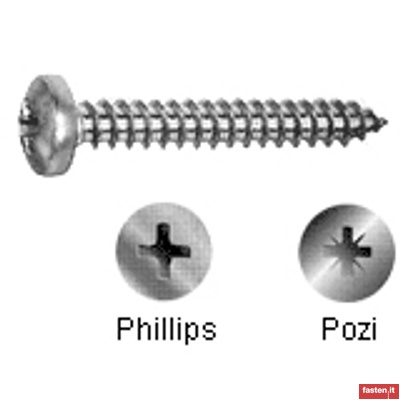Introduction
Screws are ubiquitous in our daily lives, serving a multitude of purposes in construction, manufacturing, and even DIY projects. Among the myriad types of screws available, the cross-recessed tapping screw stands out for its versatility and reliability. In this article, we will delve into the world of cross-recessed tapping screws and explore frequently asked questions (FAQs) related to their use.
FAQ Section
Q1: What is a Cross-Recessed Tapping Screw?
A cross recessed tapping screw, often referred to as a Phillips screw, is a type of fastener characterized by its cruciform (cross-shaped) slot on the head. It is designed for use with a Phillips screwdriver or bit, which fits securely into the slot to turn the screw.
Q2: How Does a Cross-Recessed Tapping Screw Work?
These screws are specifically engineered for "self-tapping" purposes. This means that they can create their threads as they are being driven into a material. The sharp, pointed tip allows the screw to pierce through and grip onto a surface effectively. As the screw turns, the threads cut into the material, creating a secure and tight connection.
Q3: What Are the Common Applications of Cross-Recessed Tapping Screws?
Cross-recessed tapping screws are employed in various applications, including:
-
Woodworking: These screws are frequently used in woodworking projects due to their ability to self-tap into wood, creating strong and reliable joints.
-
Metalworking: They are also valuable in metalwork, ideal for connecting thin metal sheets or fastening metal to wood.
-
Assembly Lines: In manufacturing and assembly processes, these screws are preferred for their speed and ease of use.
-
DIY Projects: Home improvement and DIY enthusiasts often use these screws for their simplicity and reliability.
Q4: Are There Different Types of Cross-Recessed Tapping Screws?
Yes, there are several variations of cross-recessed tapping screws, including:
-
Pan Head Screws: These have a flat, slightly rounded head, which is suitable for applications where the screw needs to sit flush with the surface.
-
Flat Head Screws: These have a countersunk head, designed to be flush with or below the surface.
-
Round Head Screws: These have a domed head and are often used for decorative purposes.
Q5: What Are the Advantages of Using Cross-Recessed Tapping Screws?
Cross-recessed tapping screws offer numerous advantages, such as:
-
Efficiency: Their self-tapping ability reduces the need for pre-drilling holes, saving time and effort.
-
Secure Fastening: These screws provide a strong and reliable connection.
-
Ease of Use: The cross-shaped slot provides excellent grip, reducing the risk of slipping during installation.
-
Widely Available: Cross-recessed tapping screws are readily available at most hardware stores.
Q6: How Do I Choose the Right Size and Length for My Project?
Selecting the appropriate size and length is crucial. Generally, screws are sized by their gauge (diameter) and length. It's essential to choose a size that matches the thickness of the material you're fastening. Be sure to measure accurately, and if you're unsure, consult with a professional or the manufacturer's guidelines.
Q7: Any Tips for Proper Installation?
For successful installation, remember to:
-
Use the correct Phillips screwdriver or bit size.
-
Apply steady pressure while turning the screw.
-
Ensure the surface is clean and free of debris.
-
Be cautious not to over-tighten, which can damage the material.
Q8: Are There Any Precautions to Take?
Be mindful of potential issues, such as cam-out (when the screwdriver slips out of the slot) and overtightening, which can strip the threads. Additionally, always wear safety gear, especially when working with power tools.
Conclusion
Cross-recessed tapping screws are essential fasteners known for their versatility and efficiency. Whether you're an avid DIYer or a professional in need of reliable fastening solutions, these screws are sure to prove their worth in various applications. By understanding how to select and use them correctly, you'll be well-equipped to tackle a wide range of projects.


No comments yet